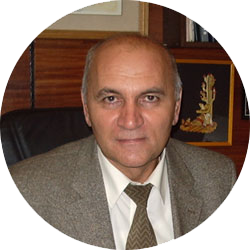“Live” and “dead” water – as applied to electrochemical activation, “live” water is catholyte, that is, water electrochemically treated near cathode. It demonstrates elevated electron activity and has markedly pronounced reductant properties. Catholyte, being electron-donor medium, possesses negative redox potential values characteristic of biologic tissues, therefore application of catholyte to heal wounds, burns, inflammation, and in tissue regeneration enhances the above processes. If a bio-organism cell is placed into a medium with similar redox potential, the cell does not need to spend energy on leveling the potential between inner milieu and outer environment, thus directing all its vigor to recovery processes.
“Dead” water is anolyte – water subjected to anode electrochemical exposure and consequently demonstrating decreased electron activity. Anolyte has well-marked oxidant features. Anolyte’s active components are represented by compounds similar to compounds generated by macro-organisms in the process of phagocytosis and pinocytosis.
